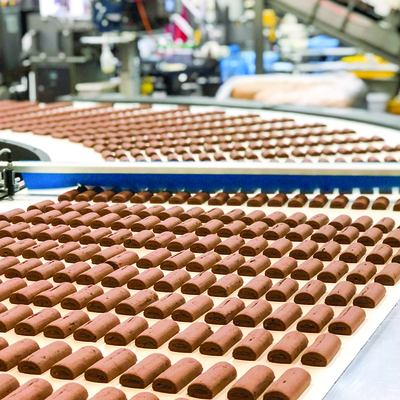How Tasti Foods achieved optimum compressed air system efficiency

New Zealand food manufacturer Tasti Foods recently invested in a complete Kaeser compressed air system. This was selected to not only meet the compressed air demands of its new wholefoods manufacturing hall, but also to reliably and efficiently deliver compressed air to all other required areas of the manufacturing facility. For maximum efficiency, complete control and connectivity of all components within the compressed air station, a Sigma Air Manager 4.0 master controller was installed.
From baked bars, nut bars, muesli, granola and cereal style bars, to raw fruit and nut snack packs, dried fruits, nuts and baking products — on most supermarket shelves throughout New Zealand and Australia, you will find products manufactured by Tasti Foods.
Now in its third generation, Tasti Foods remains proudly New Zealand owned and operated. The company began life back in the 1930’s when two friends decided to start producing crystallised ginger. Fast forward more than 80 years and now a workforce of over 250 produce a whole range of food products including co-manufacturing for several internationally recognised brands. They also supply many supermarket chains in New Zealand and Australia with private label snack bars.
Operating an efficient manufacturing facility
Tasti has always manufactured in New Zealand and has been in its current purpose-built facility on the Te Atatu Peninsula for almost 50 years. In that time the factory has been extended and re-fitted several times as the company has grown. This modern facility is fully automated and designed to deliver the highest quality products, and Tasti continue to invest heavily in the required plant and facilities to ensure they can operate efficiently and to the highest quality standards.
Compressed air is mainly used for the automation of equipment in the manufacturing process. Some of the most sensitive pieces of equipment that compressed air powers at Tasti are the sophisticated and robotic packing machines. Here, compressed air powers cylinders that perform a number of critical tasks – picking and making boxes, placing the products in the boxes, then sealing the boxes up ready for dispatch. The equipment operates very quickly – it can pack over 800 products a minute – however, to do this it relies on a constant supply of high quality and dry compressed air.
The existing compressed air system was struggling to meet the compressed air requirements reliably and efficiently. Reoccurring failures in the compressed air line were creating downtime in some areas of production. At the same time as these issues were occurring, Tasti had begun planning the expansion of its manufacturing facility to include a new hall specifically to manufacture its burgeoning wholefoods ‘free from’ product range.
As Tasti started the planning process for the new build, elevated electricity bills had additionally led them to invite Energy NZ to conduct an audit on the existing manufacturing facility. One area the audit highlighted was that cost savings could be made by investing in compressors that were connected through a controller to each other, and were well staged. As the manufacturing facility had developed over the years so had the compressed air system grown and changed. The existing compressors were therefore not linked together and so they had no control around staging. There was also no ring main connecting all compressed air applications in the facility together to one compressed air source.
All of these factors together led Matthew Barber, the Maintenance Engineering and Environmental Manager at Tasti, to take the new build — which would require compressed air — as an opportunity to address the entire compressed air system for the manufacturing facility.
“We saw the expansion as the ideal opportunity to find one solution that would not only solve the issues we were having with the existing compressor system, but would also allow us to get the whole plant set up on a ring main from one central compressor room,” Barber said.
“In addition, we were keen to digitalise the compressed air system — linking all of the compressed air equipment together for optimum efficiency and system control.”
Meeting the criteria
Barber invited a number of compressed air providers to review their requirements and recommend a solution. Working closely with the Procurement Manager, he developed a selection criteria by which they could measure not only the overall suitability of the recommended compressed air equipment — including design, quality, digitalisation and efficiency — but also other key factors to Tasti, such as after sales support, service, backup and training.
Kaeser Compressors was invited to tender for the project and was successful in meeting Tasti’s criteria. As a result, a complete Kaeser compressed air system was recently installed. A ring main was also installed which now connects all of the compressed air applications throughout the manufacturing facility to the new compressed air system.
To read the full story, visit: https://bit.ly/3fkVJUF.
Six beverage trends predicted for 2026
Demand for customisation, 'protein-ification' and sustainable storytelling are some of...
Making UHT processing less intensive on energy
A nutritional beverages company was seeking a more sustainable way to produce UHT beverages using...
Tasty twist for chocolate alternatives
Food scientists develop two novel flavour-boosting techniques to transform carob pulp into a...












